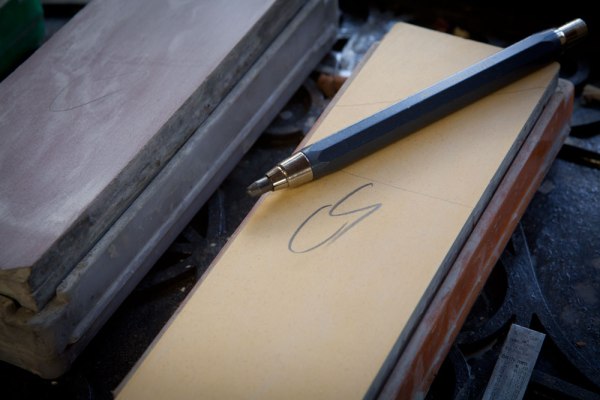
When I started teaching woodworking about 10 years ago, it felt like I was spending more time flattening the sharpening stones than I was teaching.
It’s a common problem in hand-tool classes and shops: As soon as a woodworker finishes up an edge, he or she is so eager to get back to the bench that the stone is left hollow. A few years ago I started making this threat: “Leave my stones hollow and you will be fined one beer.”
That worked. Now I drink too much beer.
Turns out this was a solution in traditional shops as well. Here’s a great quote dug up by the always-digging Jeff Burks.
When the edge requires grinding and whetting, in the former of these operations, viz. the grinding, is performed on a flat rub-stone, similar to what carpenters sharpen their plane-irons on, with the application of water. This stone is about six inches broad, and eighteen long, and so careful are they to keep its surface flat, that it is a regulation in the work-shops, for every workman, after using the stone, to write his name upon it with a piece of coal; when, if his successor finds it left so uneven, that a halfpenny can be passed underneath the edge of an iron, straight-edged, laid upon it, the former workman is subjected to a fine for his carelessness.
— From “The Technical Repository: On the advantages of improving the qualities of Cutting Instruments, by Burnishing, and thereby condensing their Edges.” by Thomas Gill: Volume 8 – London, 1826
— Christopher Schwarz